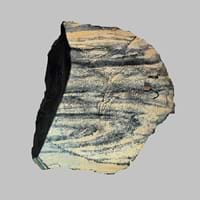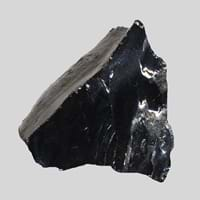Definition
Oil Shale is a fine-grained sedimentary rock from which oil is extracted
Anthracite is a type of sedimentary rock which is hard and is variety of coal that has high luster
Origin
Unknown
Pennsylvania, U.S.
Discoverer
Unknown
Unknown
Etymology
From Old English scealu in its base sense of thing that divides or separate
From Greek anthrakites, from anthrax, anthrak meaning coal
Class
Sedimentary Rocks
Metamorphic Rocks
Sub-Class
Durable Rock, Soft Rock
Durable Rock, Soft Rock
Group
Not Applicable
Not Applicable
Other Categories
Fine Grained Rock, Opaque Rock
Coarse Grained Rock, Fine Grained Rock, Medium Grained Rock, Opaque Rock
Texture
Splintery
Amorphous, Glassy
Color
Black, Brown, Buff, Green, Grey, Red, Yellow
Black, Brown, Dark Brown, Grey, Light to Dark Grey
Durability
Durable
Durable
Appearance
Muddy
Veined or Pebbled
Interior Uses
Not Yet Used
Not Yet Used
Exterior Uses
Not Yet Used
Not Yet Used
Other Architectural Uses
Not Yet Used
Not Yet Used
Construction Industry
Cement Manufacture, Construction Aggregate, for Road Aggregate, Serves as an Oil and Gas Reservoir rock
Cement Manufacture, for Road Aggregate, Making natural cement, Steel Production
Medical Industry
Not Yet Used
In Chemical and Pharmaceutical Industry, Manufacture of Aspirins
Antiquity Uses
Artifacts
Not Yet Used
Commercial Uses
An Oil and Gas Reservoir
Alumina Refineries, Electricity Generation, Liquid Fuel, Manufacture of Soap, Solvents, Dyes, Plastics and Fibres, Paper Industry
Types
Carbonate-rich Shale, Siliceous Shale and Cannel Shale
Semi-anthracite and Meta-anthracite
Features
Easily splits into thin plates, Generally rough to touch, Is one of the oldest rock, Very fine grained rock
Helps in production of Heat and Electricity, Used as fossil fuel
Archaeological Significance
Monuments
Not Yet Used
Not Yet Used
Famous Monuments
Not Applicable
Not Applicable
Sculpture
Not Yet Used
Not Yet Used
Famous Sculptures
Not Applicable
Not Applicable
Pictographs
Not Used
Used
Petroglyphs
Not Used
Used
Figurines
Not Yet Used
Not Yet Used
Formation
Oil Shale forms on the beds of seas and lakes and its formation starts with the organic debris settling and accumulating at the bottom of a lake or sea which are then transformed into rock with the help of high temperature and pressure.
Anthracite forms from the accumulation of plant debris in a swamp environment. When plant debris dies and falls into the swamp, the standing water of the swamp protects it from decay.
Mineral Content
Albite, Biotite, Calcite, Chert, Chlorite, Dolomite, Hematite, Micas, Muscovite or Illite, Pyrite, Quartz, Silica, Sulfides
Calcite, Clay, Clay Minerals
Compound Content
Ca, Fe, Mg, Silicon Dioxide, Sodium
Carbon, Hydrogen, Nitrogen, Oxygen, Sulphur
Types of Metamorphism
Not Applicable
Burial Metamorphism, Contact Metamorphism, Regional Metamorphism
Types of Weathering
Biological Weathering, Chemical Weathering, Mechanical Weathering
Not Applicable
Types of Erosion
Chemical Erosion, Sea Erosion, Water Erosion
Not Applicable
Grain Size
Very fine-grained
Medium to Fine Coarse Grained
Fracture
Not Available
Conchoidal
Porosity
Highly Porous
Less Porous
Cleavage
Slaty
Non-Existent
Toughness
2.6
Not Available
Specific Gravity
2.2-2.8
1.1-1.4
Transparency
Opaque
Opaque
Density
2.4-2.8 g/cm3
1.25-2.5 g/cm3
Resistance
Heat Resistant, Impact Resistant
Heat Resistant, Water Resistant
Deposits in Eastern Continents
Asia
Bangladesh, China, India, Israel, Jordan, Russia, Syria, Thailand, Turkey
Bangladesh, Burma, Cambodia, China, India, Indonesia, Kazakhstan, Malaysia, Mongolia, Pakistan, Turkey, Vietnam
Africa
Ethiopia, Kenya, Morocco, South Africa, Tanzania
Botswana, Kenya, Morocco, Mozambique, South Africa, Tanzania
Europe
Austria, France, Germany, Greece, Italy, Romania, Scotland, Spain, Sweden, Switzerland
Belgium, Bulgaria, England, France, Germany, Greece, Hungary, Kosovo, Netherlands, Norway, Poland, Romania, Serbia, Slovakia, Slovenia, The Czech Republic, Ukraine, United Kingdom
Others
Greenland, Not Yet Found
Not Yet Found
Deposits in Western Continents
North America
Canada, USA
Canada, Mexico, USA
South America
Bolivia, Brazil, Chile, Colombia, Ecuador, Peru, Venezuela
Brazil, Chile, Colombia, Venezuela
Deposits in Oceania Continent
Australia
New South Wales, New Zealand, Queensland, Victoria, Western Australia
New South Wales, Queensland, Victoria
Oil shale vs Anthracite Characteristics
Though some rocks look identical, they have certain characteristics which distinguish them from others. Characteristics of rocks include texture, appearance, color, fracture, streak, hardness etc. Oil shale vs Anthracite characteristics assist us to distinguish and recognize rocks. Also you can check about Properties of Oil shale and Properties of Anthracite. Learn more about Oil shale vs Anthracite in the next section. The interior uses of Oil shale include Not yet used whereas the interior uses of Anthracite include Not yet used. Due to some exceptional properties of Oil shale and Anthracite, they have various applications in construction industry. The uses of Oil shale in construction industry include Cement manufacture, Construction aggregate, For road aggregate, Serves as an oil and gas reservoir rock and that of Anthracite include Cement manufacture, For road aggregate, Making natural cement, Steel production.
More about Oil shale and Anthracite
Here you can know more about Oil shale and Anthracite. The life cycle of a rock consists of formation of rock, composition of rock and transformation of rock. The composition of Oil shale and Anthracite consists of mineral content and compound content. The mineral content of Oil shale includes Albite, Biotite, Calcite, Chert, Chlorite, Dolomite, Hematite, Micas, Muscovite or Illite, Pyrite, Quartz, Silica, Sulfides and mineral content of Anthracite includes Calcite, Clay, Clay Minerals. You can also check out the list of all Sedimentary Rocks. When we have to compare Oil shale vs Anthracite, the texture, color and appearance plays an important role in determining the type of rock. Oil shale is available in black, brown, buff, green, grey, red, yellow colors whereas, Anthracite is available in black, brown, dark brown, grey, light to dark grey colors. Appearance of Oil shale is Muddy and that of Anthracite is Veined or Pebbled. Properties of rock is another aspect for Oil shale vs Anthracite. The hardness of Oil shale is 2-3 and that of Anthracite is 1-1.5. The types of Oil shale are Carbonate-rich Shale, Siliceous Shale and Cannel Shale whereas types of Anthracite are Semi-anthracite and Meta-anthracite. Streak of rock is the color of powder produced when it is dragged across an unweathered surface. The streak of Oil shale is white while that of Anthracite is black. The specific heat capacity of Oil shale is 0.39 kJ/Kg K and that of Anthracite is 1.32 kJ/Kg K. Depending on the properties like hardness, toughness, specific heat capacity, porosity etc., rocks are resistant to heat, wear, impact, etc.Oil shale is heat resistant, impact resistant whereas Anthracite is heat resistant, water resistant.





